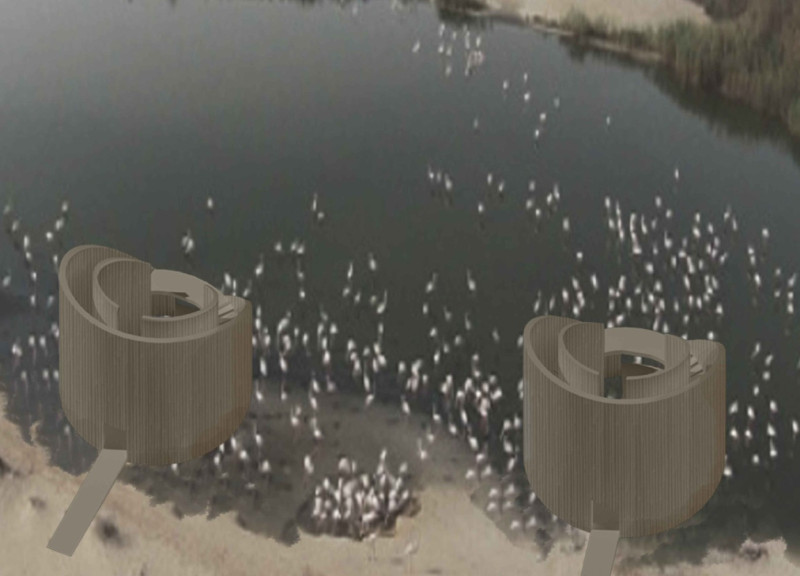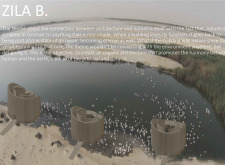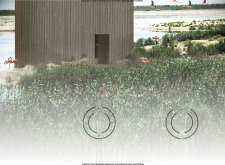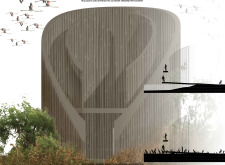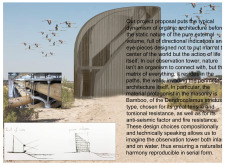5 key facts about this project
The design examines the connection between architecture and nature, highlighting the need for harmony with the environment. Situated in an organic landscape, the observation tower serves as a platform for experiencing the surroundings. The overall concept revolves around integrating architecture into nature while enhancing human interaction with the landscape.
Concept and Design Approach
The idea behind the design is that buildings, once they lose their purpose, return to nature. This informs how the observation tower is conceived—not as a separate object but as part of the environment. By focusing on organic shapes instead of traditional forms, the design allows for movement and change, creating a dynamic relationship with the landscape.
Architectural Elements
The observation tower is the central feature of the design, intended to improve the connection with nature. Its shape is defined by flowing lines and an adaptable profile, enabling it to fit well with its setting. The focus on organic architecture promotes a sense of connection, emphasizing how life interacts with the space rather than prioritizing human needs alone.
Materiality and Sustainability
Bamboo, particularly the Dendrocalamus strictus type, is an important material for the project. This type of bamboo is known for its high strength and resistance to natural forces. Using bamboo reflects a commitment to sustainability and the idea that architecture can work with nature instead of against it, supporting ecological practices.
Design Versatility
The observation tower is designed to function in various settings, whether on land or water. This adaptability allows it to respond to different environmental conditions while maintaining its purpose. Such versatility shows a thoughtful approach to design, where context significantly influences how the space is experienced.
The details of the tower enhance its natural appearance. As light passes through, it creates patterns within the structure. This not only connects the interior to the exterior but also invites visitors to appreciate the changing atmosphere throughout the day.


